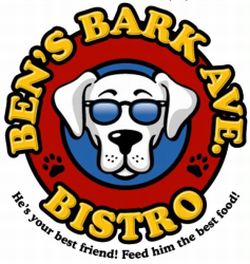
Do you have a fat dog? Be honest. No one likes to admit that their pet has put on a couple of extra pounds. Do you find yourself making excuses like: "He is not fat, just big boned," or "She isn't fat she just needs a haircut," or do you just respond with flat anger and denial like, "How dare you call my princess fat!" There is no use denying it. If you have a fat dog, you have a fat dog. Just accept it, take ownership that it is your fault, and do something about the situation. It will be life extending for them. It's time for a doggie exercise plan!
The two most important parts of an exercise plan:
The two most vital parts of any exercise program are diet and exercise. Like two wings of an airplane you are not going to be going anywhere with out both of them. You can't have one without the other.
Dog Diet:
The first place to start in any exercise regime is diet. Just like with a human exercise program is doomed to ultimate failure with out taking proper diet and nutrition into consideration, so to will your dog's exercise program will end failure with out taking time to revaluate what you are feeding your dog. Read the nutritional information on the back of your dog's food. Is it healthy? Is it good for your dog? Now the trick is to find a dog food that is healthy - you are their food source, so they are counting on you to pick the best!
Ben's Bark Ave. Bistro has great advice on choosing the healthiest dog food, and what you should look for. Maybe it is time to consider a more natural, fresh approach to feeding your dog, and go with the BARF diet, which is a more natural and healthier diet, based on what your dog would actually eat in the wild.
The obvious question and most easily identified source to the problem is; are you feeding your dog too much? Are you giving them more than the recommended portion size at each meal-time? The dog food manufactures usually put serving size information on the side of the dog food containers. Make sure the portion size matches perfectly. There is a fine line to the calorie count when breed and age are taken into consideration.
Exercise:
Now this is the fun part! There are many ways that your dog can get some exercise. All of them are equally as effective, if done every day with consistency. Ideally you would mix and match these methods of exercise to keep both you and your dog from getting bored.
Play with your dog! Get the doggie toys out, and start playing. All of the tried-and-true games work great for exercise: catch, fetch, tug-o-war, and a host of other fun dog games.
Walk your dog! Taking your dog for a walk is a great way to get exercise for both you and your dog. Just grab a leash and some pooh bags and get going. If they haven't been for a walk in a while start them off gradually with a short walk, and gradually increase the walks length. Just like a weight trainer don't go to heavy for your heavy dog. Moderation until the weight comes off and the activity can slowly increase.
Run with your dog! This is a great way to get exercise especially if you are getting a bit rounded in the ol' belly area. Take it easy at first—take your dog for a short run. But after a while this can be a great way to bond with your dog as well as getting some much needed exercise.
So get to it! Your dog's excess weight won't go away by itself. Plan out the perfect exercise plan for your dog, and watch as the diet and exercise melts those pounds away. Don't let winter add to the problem. Remember a healthy dog is a happy dog, and no one wants to be fat!
Here at Ben's Bark Ave. Bistro your pets health is our #1 Goal! Ask us for our opinion on diet, excercise and the proper treats.

















